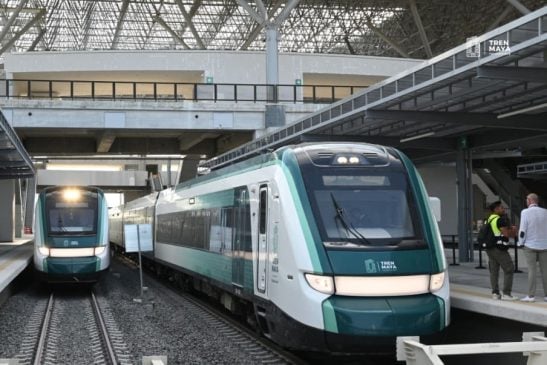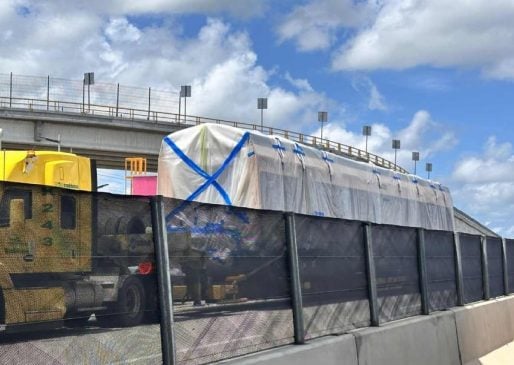Riviera Maya, Q.R. — The head of Fonatur says with state-of-the-art technology, the Maya Train will be one of the best in the world. On Monday, Javier May, who heads the National Fund for the Promotion of Tourism (Fonatur), presented a comprehensive report on the railway.
The Maya Train will be one of the best rail transports in the world because it will have state-of-the-art technology and highly trained personnel, May said Monday during the morning Presidential press conference.
He also said that beyond a track and trains, the Maya Train will be a whole railway system that will be strengthened with the air connectivity of the southeast.
He stressed that to the current airports in Villahermosa, Ciudad del Carmen, Campeche, Mérida and Cancún, the construction of the new airport in Tulum and the modernization of the Chetumal and Palenque air terminals are added.
“To guarantee safe and calm travel experiences, throughout the Maya Train route there will be surveillance by land and air, with elements on board the wagons, patrols of tracks and overflights of drones and aircraft, in addition to surveillance at stations, whereabouts, archaeological zones and strategic facilities such as airports,” he stated.
He explained that the Maya Train is a historical project that is being built in the Mexican southeast, with 1,554 kilometers to unite Chiapas, Tabasco, Campeche, Yucatán and Quintana Roo through 34 stations and stops through which cities and towns can be enjoyed, tourist destinations, archaeological sites and places of extraordinary natural beauty.
“With Mexican hands in Ciudad Sahagún, Hidalgo, the manufacturing of the 42 trains and their 219 wagons is advancing, which means we are advancing for the inauguration of the Maya Train in December 2023,” he said.
During the morning press conference, it was also explained that there will be a ticketing system with varying rates for tourists and local residents as well as seniors. However, prices were not announced.
Blas Andrés Núñez Jordán, the head of the Operations of Sedena, confirmed six Maya Train hotels are being built near the archaeological zones of Palenque, Edzná, Nuevo Uxmal, Chichén Itzá, Tulum and Calakmul.
The Maya Train route will offer visitors more than 20 archaeological sites. One from Chiapas, four from Campeche, ten from Quintana Roo, one from Tabasco and ten from Yucatán.
The archaeological sites that will be on the route include Palenque in Chiapas, and Moral-Reforma and El Tigre, located in Tabasco along section 1.
In section 2, the Edzná and Xcalumkín areas in Campeche. Section 3 in Yucatán will include Uxmal and areas of the Puuc Route, such as Dzibilchaltún, Kabah, Oxkintok, Sayil, Chacmultún, Labna and Xlapakt.
Chichén Itzá and Ek’ Balam will be on section 4, while section 5 includes the areas of Tulum, El Meco, Muyil, Paamul II Eco-archaeological Corridor and Xel-Há.
The INAH is still working on the archaeological zones of Ichkabal, in the municipality of Bacalar and the recovery of Dzibanché, Kinichná, Chacchoben and Oxtankah of section 6.
In section 7, Calakmul in Campeche, and Kohunlich in Quintana Roo, will be included.


